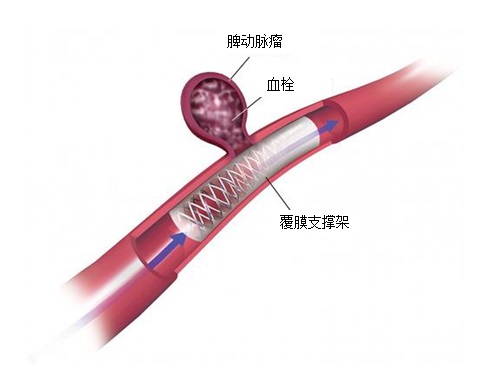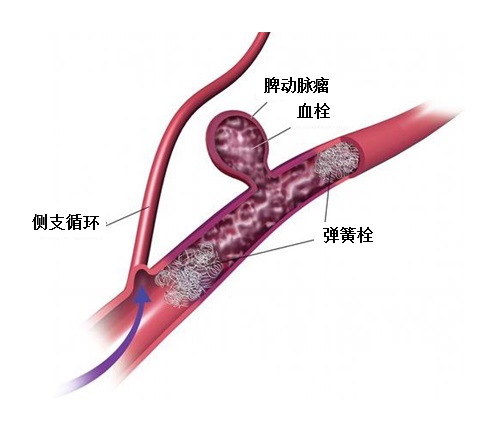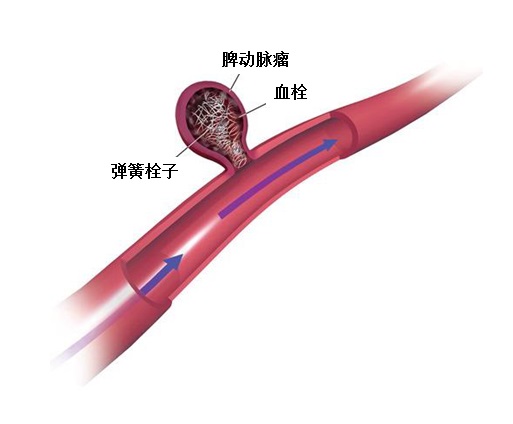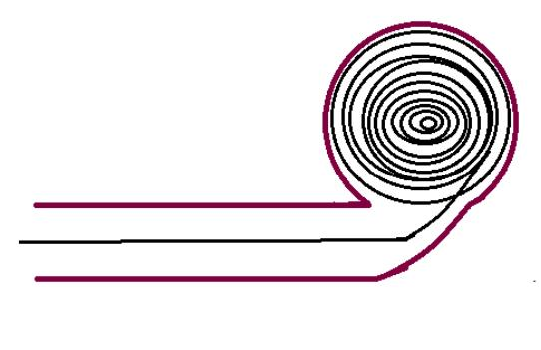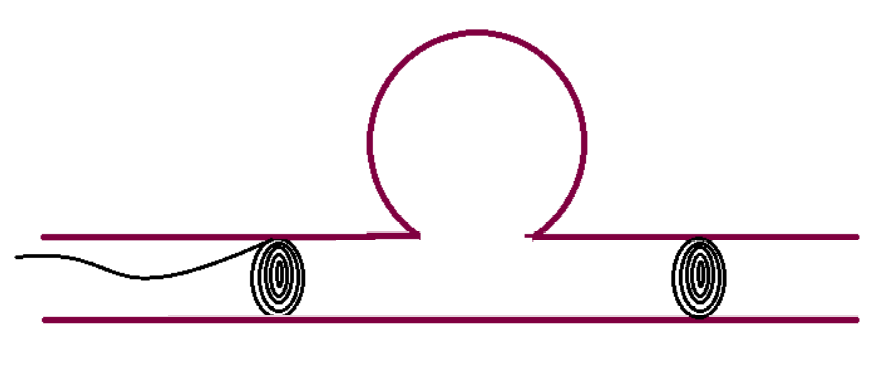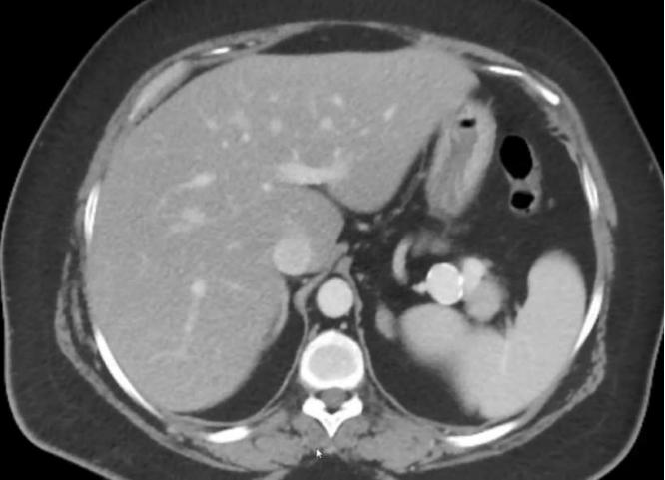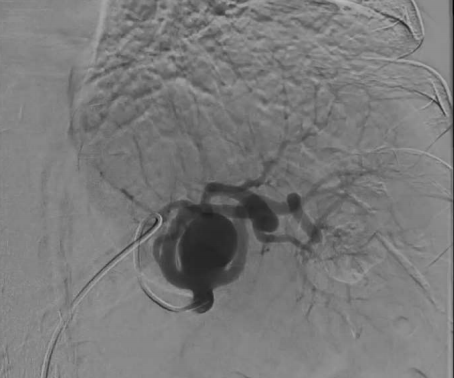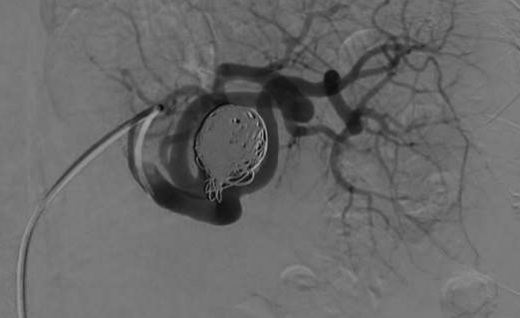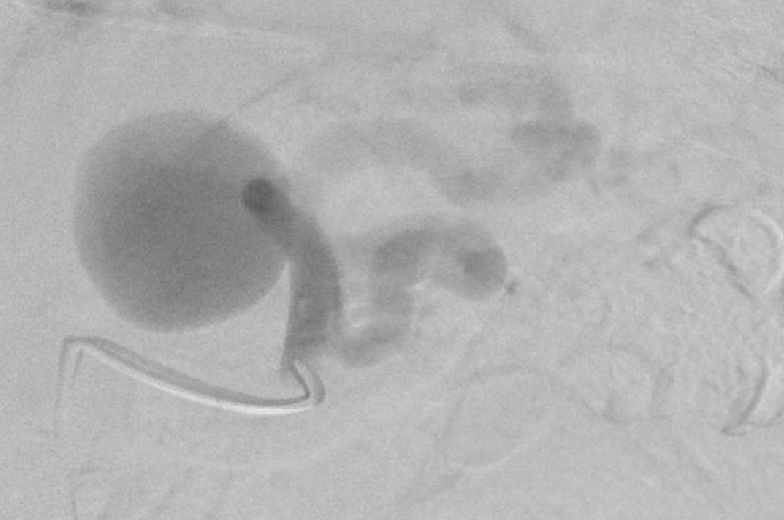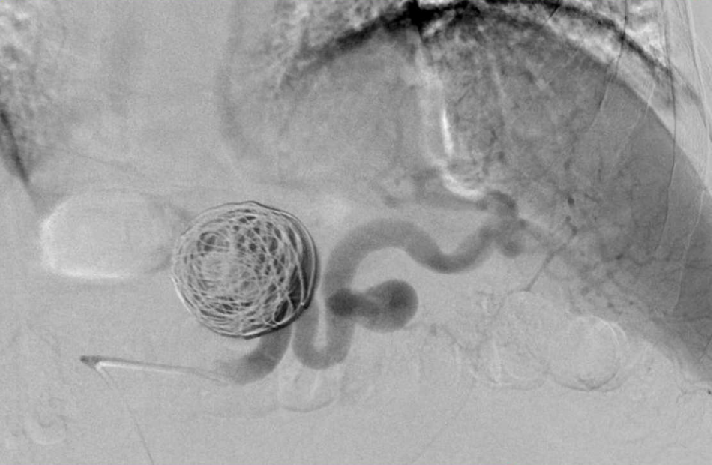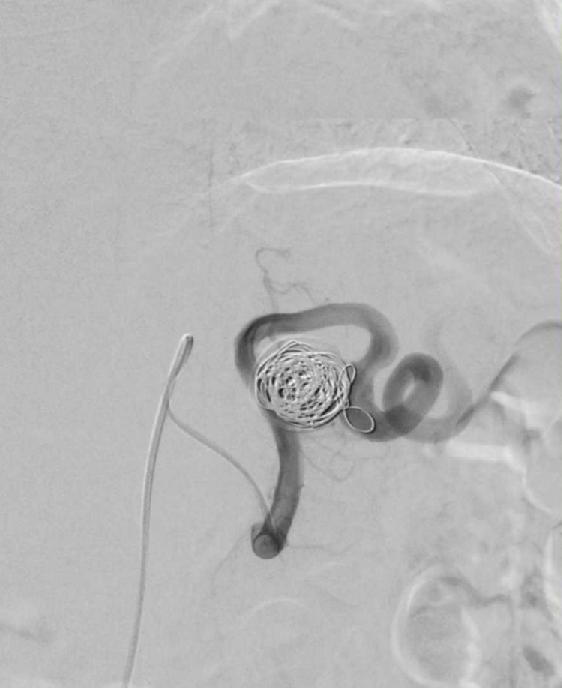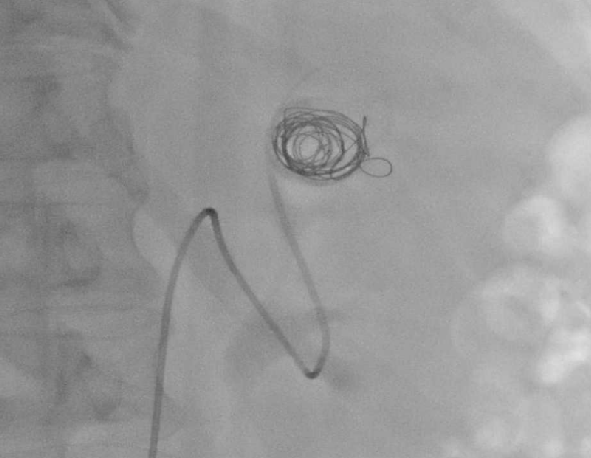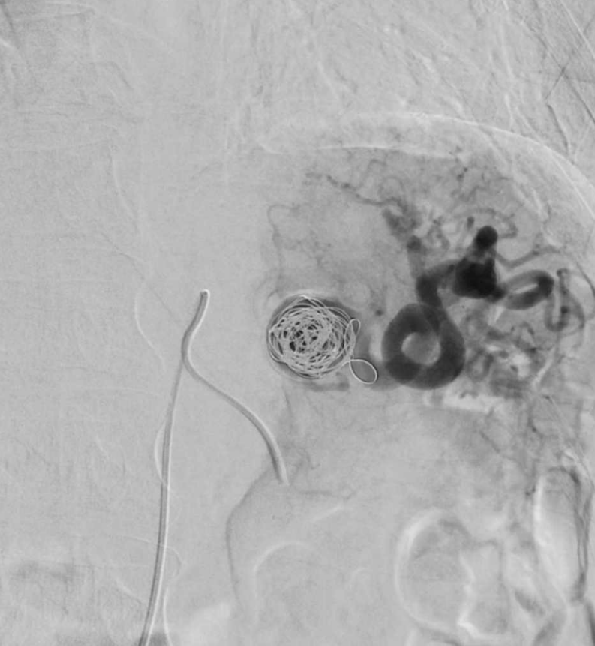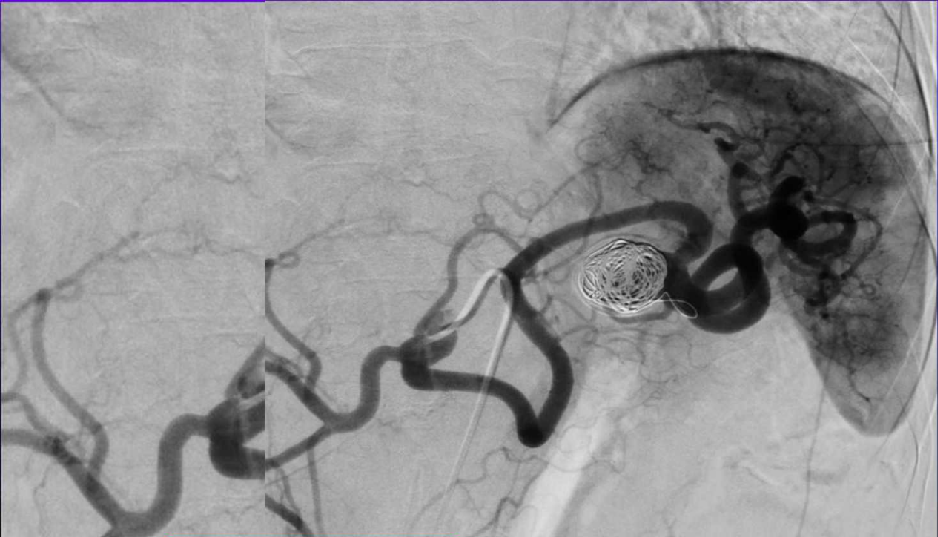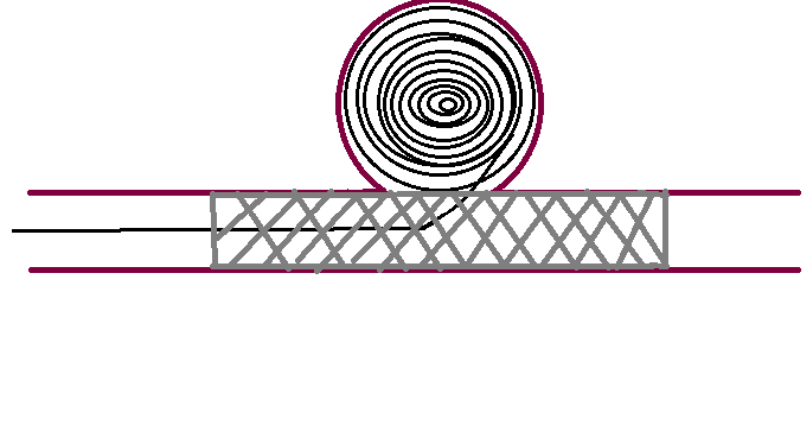Because the spleen has a rich blood supply, occlusion of the main splenic artery does not inevitably lead to total splenic infarction, and most patients experience no infarction at all, or minor segmental or subsegmental infarction [21]. In general, SAAs of the main artery are treated by occlusion of the artery on either side of the aneurysm to avoid retrograde filling of the aneurysm [19]. Traditionally this is done with coils, although other embolic agents, such as Amplatzer plugs, glue, and Onyx, may also be used. The standard technique for coil embolization involves the placement of a 0.035-in. selective catheter (Cobra or Sidewinder) in the celiac artery or in the proximal splenic artery. Further manipulations in the distal splenic artery and subsequent coil deployment may require a microcatheter and small-caliber 0.018-in. or 0.014-in. guide wiresbecause the artery is usually tortuous. Coils are deployed in the splenic artery proximal and distal to the SAA until flow is abolished (Fig. 1).
Amplatzer type 1 and 2 vascular plugs are deployed through standard 6F or 7F sheaths, although the AVP4 can be deployed through a catheter with an 0.038-in. lumen.Stent graft repair has also been used to treat SAA. This offers the advantage of maintaining patency of the main splenic artery [20, 22]. However, excessive tortuosity of the splenic artery may cause difficulties in the passage of the sheath and stent graft to the SAA location, and it may preclude this treatment method. Placement of lower-profile flow-directional stents may be technically easier in some tortuous splenic arteries. There is limited evidence for the use of multilayered stents to treat SAA [20]. Filling the aneurysm sac with coils may be an option if there is a narrow neck, although this may cause rupture of the aneurysm during manipulation, and the technique is discouraged by some interventional radiologists. For widenecked aneurysms, coiling the sac through a bare stent is a well-described technique [2, 4, 17, 23]. If the SAA occurs at the splenic hilum, it may be possible to preserve some of the branches to the spleen, although many operators treat these in the same way as an SAA in the main splenic artery


